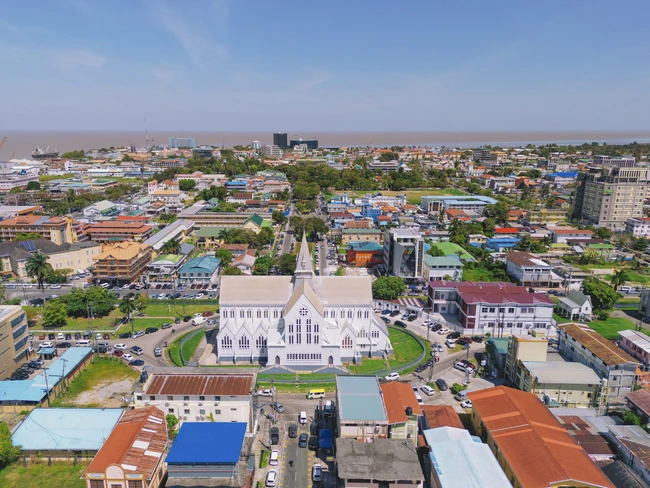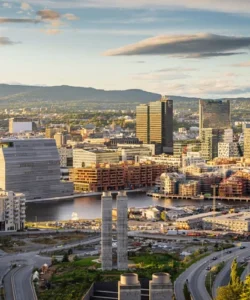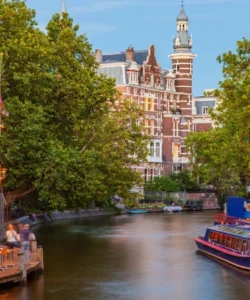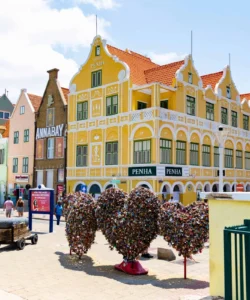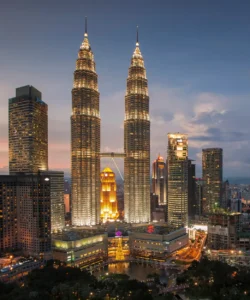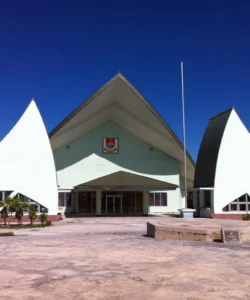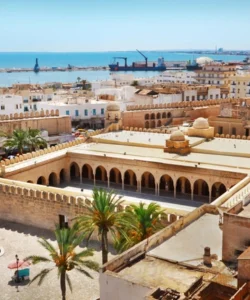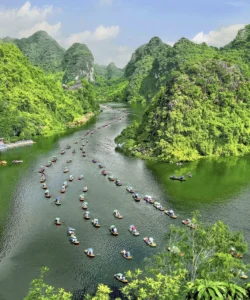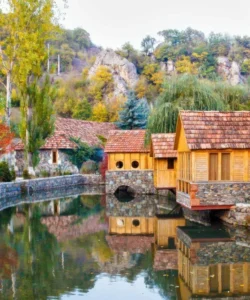Guyana is a country located on the northern coast of South America, unique for its strong Caribbean cultural ties and its vast, largely untouched rainforest. It is the only English-speaking country in South America.
![]()
Area and Population:
Guyana has an area of approximately 214,969 km² (83,000 sq mi). Its population is estimated to be around 815,000 inhabitants (as of 2024). It is one of the least densely populated countries in South America.
Language:
The official language of Guyana is English. Guyanese Creole is also widely spoken, particularly in informal settings. Indigenous languages are spoken by various Amerindian groups.
Currency:
The currency of Guyana is the Guyanese Dollar (GYD).
Religion:
The religious landscape of Guyana is quite diverse. The largest religious groups are Christianity, followed by Hinduism, and Islam. There are also smaller percentages of other faiths and those with no religious affiliation. This diversity is a reflection of its historical immigration patterns.
Capital:
The capital city of Guyana is Georgetown, located on the Atlantic coast at the mouth of the Demerara River. It is the country’s largest city, main port, and its political and economic center.
Major Cities:
Besides Georgetown, other notable towns and settlements in Guyana include:
- Linden: An important bauxite mining town.
- New Amsterdam: A historical town on the Berbice River.
- Anna Regina: A town on the Essequibo Coast.
- Bartica: Known as the “Gateway to the Interior,” situated on the Essequibo River.
- Lethem: A town on the border with Brazil, important for cross-border trade.
Attractions and Wonders:
Guyana’s main attractions are its pristine natural landscapes and incredible biodiversity, often appealing to eco-tourists and adventurers.
- Kaieteur Falls: One of the most powerful and magnificent single-drop waterfalls in the world, located in Kaieteur National Park. It’s significantly taller than Niagara Falls.
- Iwokrama International Centre for Rain Forest Conservation and Development: A vast protected rainforest reserve known for its rich biodiversity, including jaguars, harpy eagles, and giant anteaters. It offers ecotourism opportunities.
- Rupununi Savannah: A vast grassland region in the south, home to diverse wildlife and Amerindian communities, offering a unique cultural and ecological experience.
- Shell Beach: A remote nesting site for four species of sea turtles (Green, Leatherback, Hawksbill, and Olive Ridley).
- Essequibo River: The largest river in Guyana, featuring numerous islands and waterfalls.
- Georgetown: Features unique wooden colonial architecture, Stabroek Market (a bustling Victorian-era market), and the St. George’s Cathedral (one of the tallest wooden buildings in the world).
- Orinduik Falls: Cascading waterfalls on the Ireng River, near the Brazilian border, known for their jasper-like terraces.
Architecture:
Guyana’s architecture, particularly in Georgetown, is distinctive for its wooden colonial buildings. Many structures date back to the 18th and 19th centuries, built by the Dutch and British. These often feature intricate fretwork, tall windows, and raised foundations to cope with the humid climate. While modern concrete structures are also present, the wooden heritage gives Georgetown a unique charm.
Roads:
Guyana’s road network is relatively limited, with most major roads concentrated along the coast, connecting Georgetown with other coastal towns. Roads to the interior are often unpaved, particularly challenging, and can be impassable during the rainy season. Access to many natural attractions relies on small planes or river boats. Efforts are being made to improve infrastructure, especially with recent oil discoveries.
Hotels:
Accommodation in Guyana primarily centers around Georgetown, where you can find a range of hotels from international chains to local guesthouses. In the interior, eco-lodges and community-run tourism facilities offer more rustic and immersive experiences, particularly in protected areas and Amerindian villages.
Restaurants and Cuisine:
Guyanese cuisine is a flavorful fusion of African, Indian, Chinese, European, and indigenous influences, reflecting the country’s diverse ethnic makeup.
- Key Dishes:
- Pepperpot: The national dish, a savory, slow-cooked meat stew (often beef or pork) flavored with cassareep (a bitter cassava-based sauce) and served with bread.
- Curries: Due to the large Indo-Guyanese population, various curries (chicken, goat, fish, vegetable) are very popular, often served with roti or rice.
- Cook-up Rice: A one-pot dish with rice, peas or beans, and various meats or vegetables.
- Bake and Saltfish: Fried dough (bake) served with a flavorful flaked salted cod.
- Metemgee: A hearty stew made with root vegetables (cassava, yam, eddo), plantains, and dumplings, cooked in coconut milk with fish or meat.
- Roti: Various types of flatbreads, often served with curries.
- Guyanese Chinese food: A unique blend of Chinese flavors adapted to local ingredients and tastes.
- Restaurants: Dining options in Georgetown range from local eateries serving traditional Guyanese fare to more upscale restaurants offering international cuisine. Outside the capital, dining is mostly focused on local dishes, often in smaller, family-run establishments.
